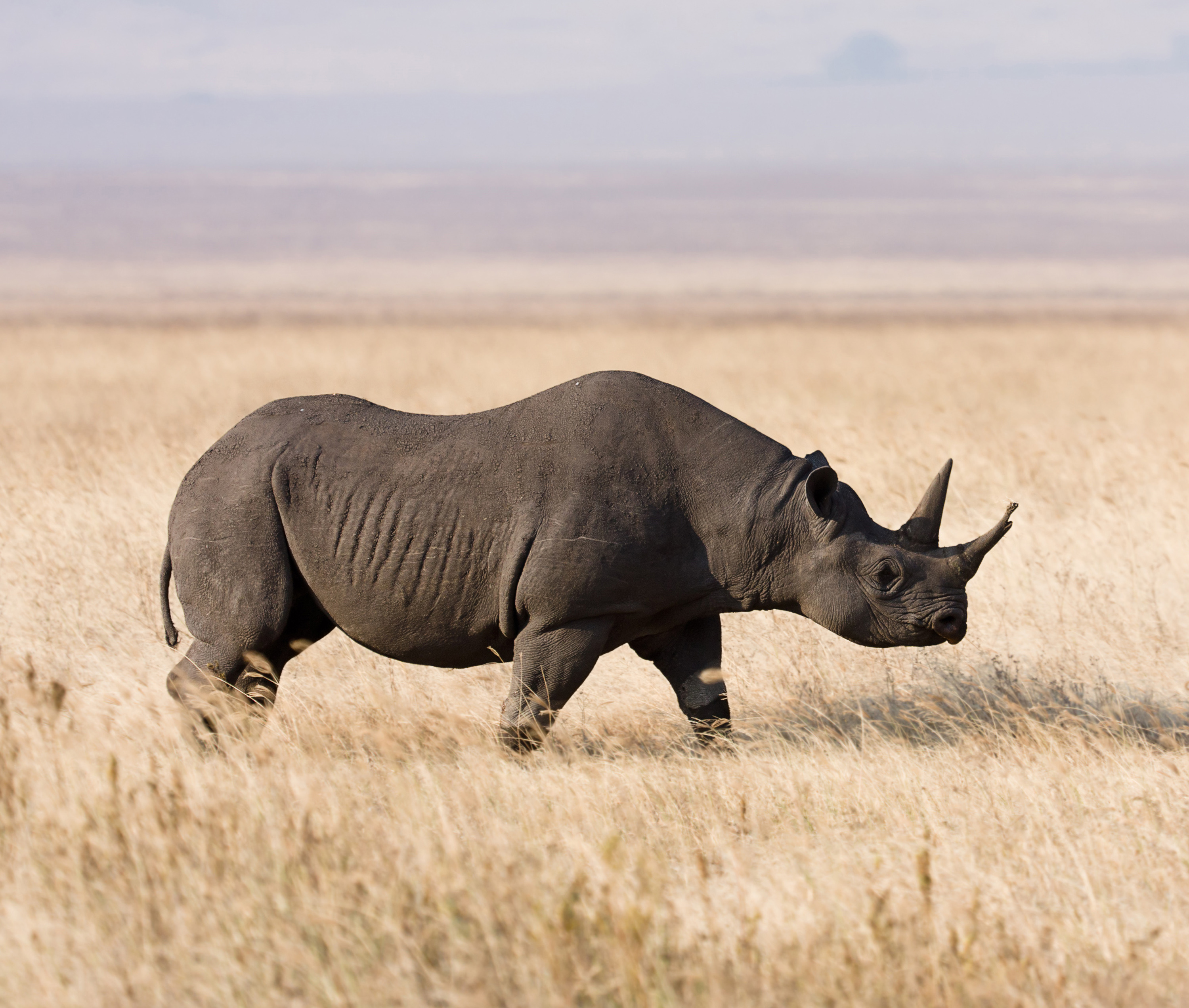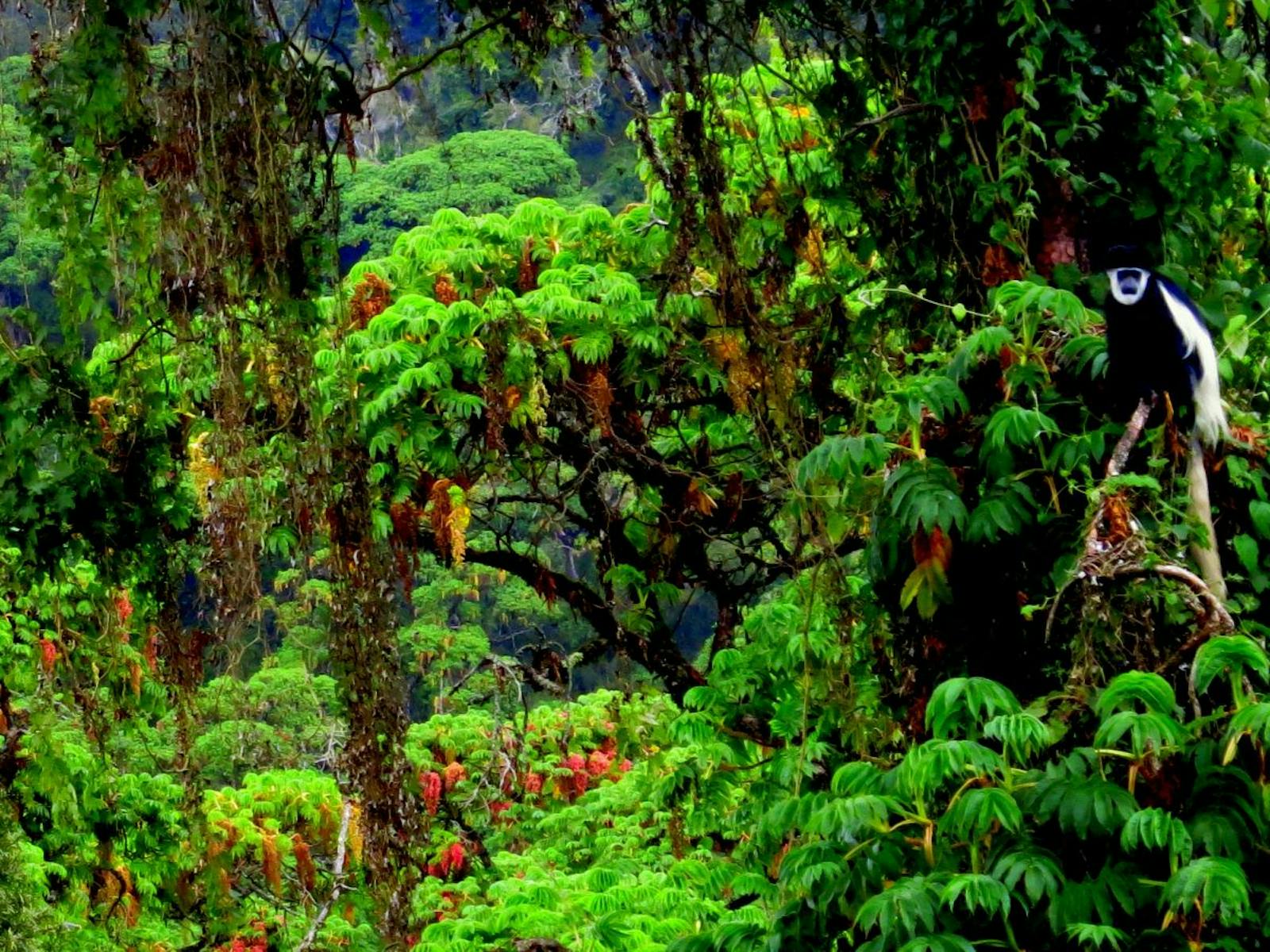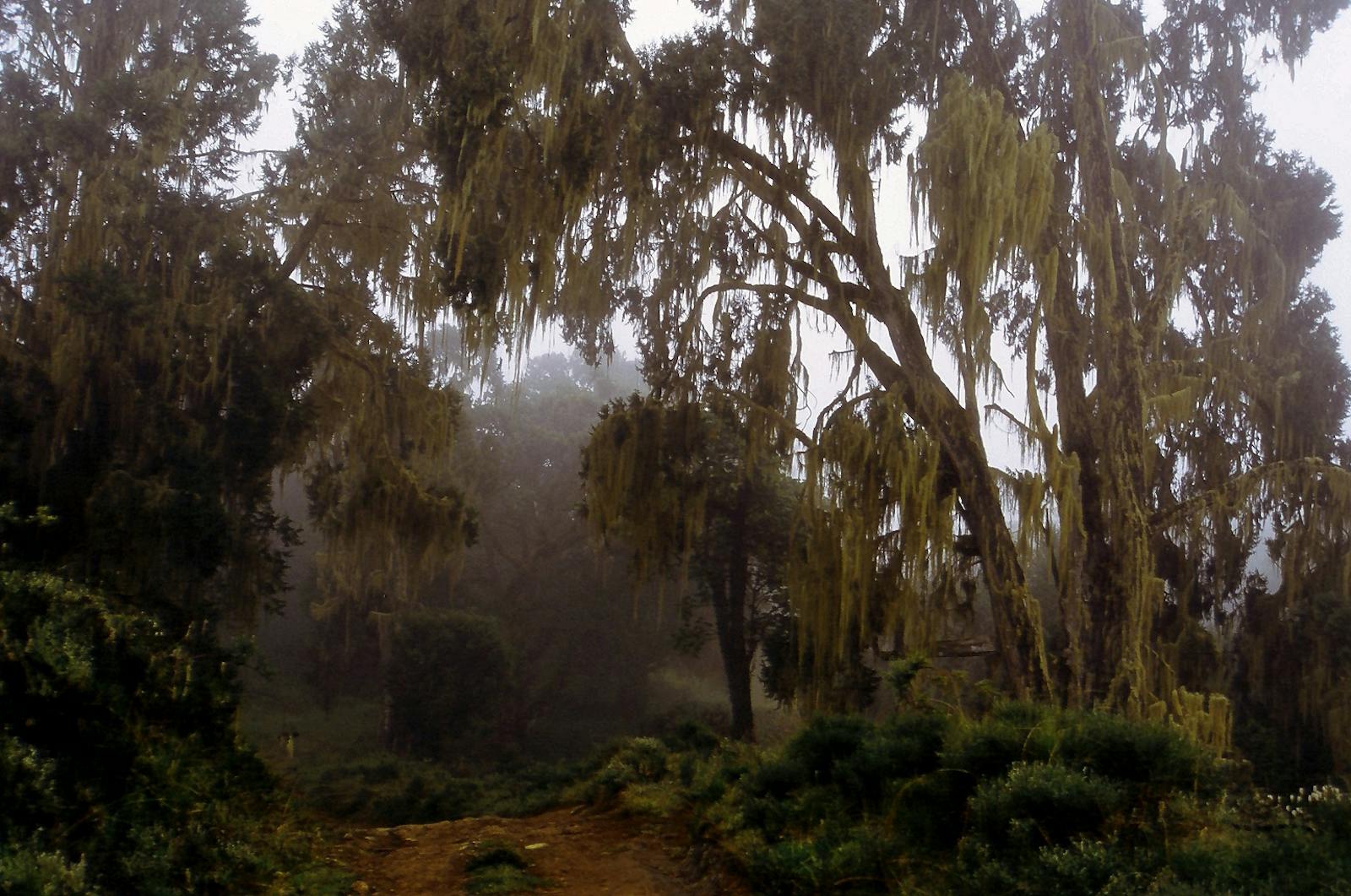East African Montane Forests
The ecoregion’s land area is provided in units of 1,000 hectares. The conservation target is the Global Safety Net (GSN1) area for the given ecoregion. The protection level indicates the percentage of the GSN goal that is currently protected on a scale of 0-10. N/A means data is not available at this time.
Bioregion: Lake Turkana-Sudd Grasslands, Bushlands & Forests (AT21)
Realm: Afrotropics
Subrealm: Horn of Africa
Ecoregion Size (1000 ha):
6,190
Ecoregion ID:
8
Conservation Target:
36%
Protection Level:
8
States: Kenya, South Sudan, Uganda, Tanzania
The threatened black rhinoceros and African bush elephant—some of the most charismatic and endangered megafauna in Africa—live amongst these montane forests in the Rift Valley of East Africa, created by the cracking of the African plate system and the volcanoes typical of this ecoregion—including Mount Kilimanjaro, Mount Kenya, and Mount Elgon. This ecoregion also host a population of the bongo, occurring in the Abadere Mountains, which is the most eastern distribution of this rainforest species in Africa.

The black rhinoceros (Diceros bicornis minor) is the flagship species of the East African Montane Forests ecoregion. Image credit: Courtesy of Ikiwaner
The ecoregion encompasses moderate to high altitude habitats along a chain of isolated mountains flanking the Rift Valley. The northern extent is at Mount Kinyeti in southern Sudan, through to Mount Moroto and Mount Elgon in Uganda, and the Aberdare Range to Mount Kenya in Kenya. Further south, the ecoregion includes the forests of the Nguruman Scarp in southern Kenya and Mount Kilimanjaro in northern Tanzania.
The ecoregion occupies elevations above c. 1,500 m altitude, with the highest altitudes of some mountains separated into the East African montane moorlands ecoregion. The climate is temperate and seasonal, with night temperatures falling below 10°C in the cold season and rising to above 30°C during the day in the warm season. At the higher elevations frosts are possible. Rainfall varies between 1,200 and <3,000 mm per annum, with a distinct wet (October–December and March–June) and dry (January–February and July–October) season.
The climate of these mountains is wetter than the surrounding lowlands, but has a pronounced rainshadow, with the eastern and southern faces being significantly wetter. At lower attitude, the submontane and montane forests are dominated by the timber species Ocotea usambarensis, Juniperus procera, Podocarpus falcatus, P. latifolius, Nuxia congesta, and Newtonia buchanii. At higher altitudes the vegetation becomes dominated by the bamboo Arundinarium alpine and trees such as Hagenia abyssinica.
These mountains support a diverse avifauna, including eight endemic bird species. Some of them, such as the Aberdare cisticola, Abbotts starling, and Kenrick’s starling, occur on only two or three mountain ranges within the ecoregion. The mammal fauna includes eight strictly endemic species of shrews and rodents. Near-endemic mammals include Jackson’s mongoose, Abbot’s duiker, sun squirrel, and the eastern tree hyrax.
There is also a number of strictly endemic reptile and amphibian species, such as Tilbury's chameleon, Müller's leaf chameleon, Mount Kenya hornless chameleon, and Ashe’s bush viper. While there is no endemic large mammals, charismatic representation of Central African species include African golden cat, giant forest hog, African bush elephant, and black rhinoceros. The relatively low rates of endemism here compared to other tropical forest ecoregions in eastern Africa is likely because the forests are not especially old, most being formed on volcanoes that are 1–2 million years old, some of which are still active or have erupted within the past 10,000 years.
Historically, this ecoregion was a mosaic of forest, bamboo, and grasslands throughout its middle elevations, grading into extensive areas of savannah and woodlands at lower elevations and heathland/moorland habitats at higher elevations. Over time, the level of habitat fragmentation has increased due to human activities. National parks in Uganda (Mount Elgon), Kenya (Mount Kenya and Aberdare), and Tanzania (Kilimanjaro and Arusha) contain well-protected areas of habitat. Other larger habitat patches are found within forest reserves, administered by forestry departments.
At lower elevations, areas of forest have been converted to tea and coffee estates, conifer plantations, and subsistence agriculture. The major loss of habitat from plantations occurred during the British colonial period in the early and middle part of the 20th century. Since that time, increasing human populations have further converted montane habitats to farmland. In many places, land conversion has occurred up to the boundaries of the protected areas, including Kilimanjaro, Kakamega, and Mau forests and Mount Kenya. Additionally, decreased forest cover negatively impacts water conservation in an already water scarce region.
Human-induced fire in the heathland/moorland zones are also believed to have depressed the upper limit of forest, and replaced it with a fire-maintained border, for example on Mount Kilimanjaro. Continued hunting of large mammal populations such as elephants and black rhinoceros both outside and within protected areas directly threatens their survival.
Priority conservation actions for the next decade:
- Designate zones within parks for forest resource use by local communities to avoid conflict with conservation objectives.
- Establish management programs aiming to reduce demand for forest resources by local communities whilst still meeting their needs.
- Increase technology use in anti-poaching enforcement, for example, implement poaching early warning systems and facilitate the detection of wildlife products in ports and airports.
-
-
1. Oonyu, J.C. 2009. Conservation education and the attitudes of local communities living adjacent to Mt. Elgon National Park, Uganda. Applied Environmental Education and Communication. 8(3-4), pp.153-164.
2. Weru, S. 2016. Wildlife protection and trafficking assessment in Kenya: Drivers and trends of transnational wildlife crime in Kenya and its role as a transit point for trafficked species in East Africa. Cambridge: TRAFFIC.
3. Lambrechts, C., Woodley, B., Hemp, A., Hemp, C. and Nnyiti, P. 2002. Aerial survey of the threats to Mt. Kilimanjaro forests. Dar es Salaam, Tanzania: United Nations Environment Programme. -
Cite this page: East African Montane Forests. Ecoregion Snapshots: Descriptive Abstracts of the Terrestrial Ecoregions of the World, 2021. Developed by One Earth and RESOLVE. https://www.oneearth.org/ecoregions/east-african-montane-forests/
-





